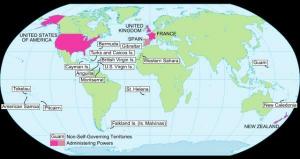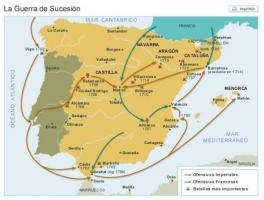Middle Ages: beginning and end
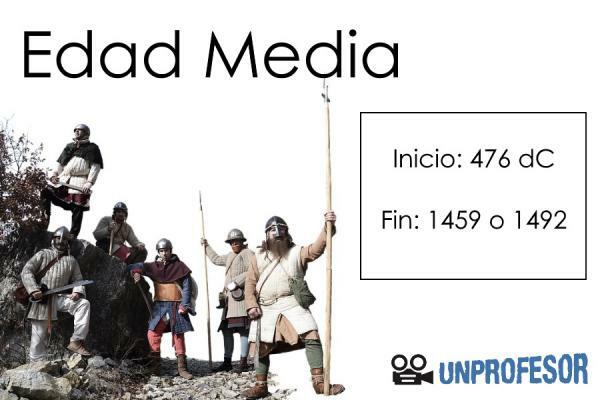
The beginning and end of the Middle Ages can be established between 476 and 1492, with the discovery of America. In this lesson from a TEACHER we will focus on one of the fundamental periods for understanding the formation of Europe, the Middle Ages: beginning and end. In it we will focus on the fundamental periods within it, stopping especially at the beginning and at the end. In the same way you will learn that this historical period was not as barbarous as it has always been drawn, because it will be the moment whereby Universities and other quite important cultural foci arise as we will see throughout the Explanation.
Index
- The end of the Roman Empire and the birth of the Middle Ages
- The High Middle Ages
- The Full Middle Ages
- The late Middle Ages
The end of the Roman Empire and the birth of the Middle Ages.
The beginning of the Middle Ages starts with the overthrow of the last emperor of the Western Roman Empire, Romulus Augustus, at the hands of Odoacer in the year 476, although we must know that previously there were already Germanic kingdoms within the borders of the Empire, that is to say, that the new society that we can consider had already begun to take shape a long time ago. medieval.
The only reason why this date is kept is because of the act that a barbarian people ended up overthrowing and ending the Roman system of government and establishing a monarchy in Italy.
In this way, the Middle Ages can be divided into three stages:
- High Middle Ages (S V-X)
- Full Middle Ages (XI-XIII S)
- Late Middle Ages (XIV-XV S)
In this other lesson from a TEACHER we discover a summary of the ages of history so that you know better how our history is divided.
The High Middle Ages.
Within this long historical period that we have just presented, we must stop at the S V-X to see the most important transformations that will take place.
Social change in the Middle Ages
One of the most important elements that we will find was the social change produced after the invasions. Roman society was acculturating itself with the foreigner, forging over time a new social reality. In this way the Roman aristocrats were linking up with the barbarian military leaders in order not to lose their possessions, thus forging a ruling class with great power.
At first, due to the problems of religion that existed among these peoples, the coexistence was somewhat hostile, but over time the religious conditions would relax, and we will even see that the barbarians themselves were converting to Christianity, making marriage bonds much easier.
An element that disappeared at that time would be the honesty or what is the same the Roman middle class, who formed the bureaucratic apparatus of the Empire, but from that moment the established government were the monarchies, which had a small group of men who directed all the elements, therefore they did not need such a group. In this way, the best positioned would enter the upper group of society, while the great Most entered a downward spiral whereby they ended up with the peasants and craftsmen.
Continuing with society, we will have to comment that the peasants little by little were seeing their freedoms diminished even more, because with time they ceded their lands to the most powerful in exchange for their protection, thus losing all probability of ascending in the lifetime.
Political changes in the High Middle Ages
In the political sphere we will find the gestation of most nations that there is today, being the first established town the Visigoths, who dominated at first the kingdom of Tolosa and later they settled in the Iberian Peninsula, which they managed to dominate completely. Other important kingdoms of this period will be the Franks, the Lombards or the Ostrogoth kingdom of Italy.
These kingdoms were made up of monarchies, which had a fairly low royal power, since they were very subordinate to the rest of the nobles, therefore the king saw his power greatly diminished. In general, the king ruled a part of the kingdom effectively, what is known as royal land, that is, territories belonging to the Crown, which were expanded with the land belonging to the family that came to power.
The rest of the territories were ruled by feudal lords, who were the owners of the land and who also governed and had jurisdiction over all the inhabitants of the land. In the same way, on many occasions we will see that kings were chosen from a small group of families (the most important), so we cannot talk about dynasties yet. In this other lesson we will discover the characteristics of feudal society.
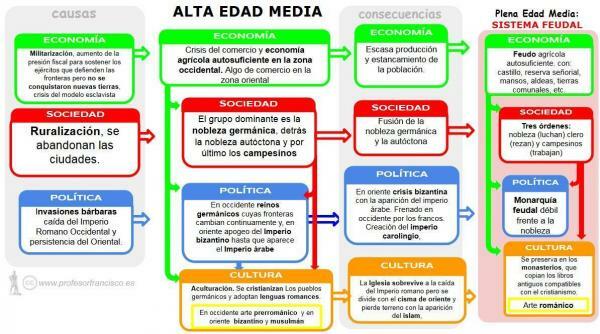
Image: Professor Francisco
The Full Middle Ages.
Within our summary on the start and end of Middle Ages we must stop at the main part of it. Between the XI-XIII centuries we are going to find a great change both in society, in politics and also in the agricultural and commercial issue.
Society in the Middle Ages
In the first place we must know that it is the moment in which the cities regained strength as the main element in social life, that is to say, little by little the old Roman cities that were abandoned in times of the invasions, are going to be populated again. In a PROFESSOR we discover the medieval city and its parts.
This fact will lead to two important elements, firstly the bourgeoisie will appear, a social class that will be in charge of commerce, banks... This social class in principle will belong to the lower class of the society, although they could have even more wealth than the nobles themselves, but because they did not have a title, they had to pay taxes.
On the other hand will appear the guilds, an association of artisans that were born to safeguard their collectives. These imposed the prices at which the merchandise should be sold, in addition to monitoring the materials that were used and finishes to ensure that any place where something was bought had the same quality. These "schools" would have their own patron, who on many occasions they would take out in processions, in addition to performing masses in his honor. Another element that we must take into account within these is that they functioned as "social security" for the members of these unions and for their families.
Within these (only in the most important ones) we will see the creation of the Universities, the first university being that of Bologna in the year 1088. From which the jurists who would later integrate the European courts would emerge. Thanks to the appearance of these, the Roman law was rescued, a fundamental element for the monarchies to gain strength from the nobles. In this way the monarchs were surrounding themselves with lawyers and lawyers instead of the old nobility of arms or members of the Church, who only sought their own fortune. Thus little by little a new body will be formed at the service of the kingdom.
Agriculture and economy in the full Middle Ages
On the subject of agriculture we will find an improvement in the harvests due mainly to the breakages carried out, that is, they left preparing more pieces of land for cultivation, making the results greater. On the other hand within this we will find that when finding iron mines in Germany and France, it is They were able to gradually improve the elements of the field, making the work of the farmers.
At this moment the payment in money appears, which, thanks to the surpluses of the field, made the peasants have more money to pay the lords and in this way they also had something left over To improve in life, also when they were freed from forced labor, they had more time to offer to work in other jobs and thus still be able to earn more.
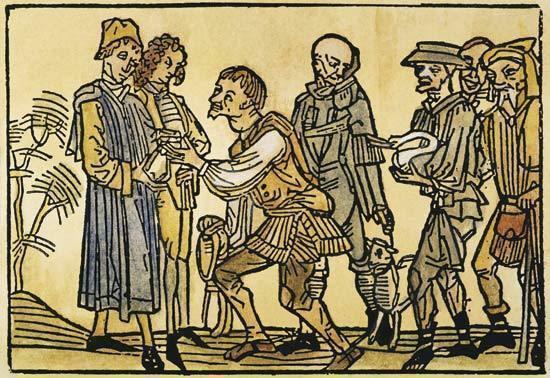
The late Middle Ages.
The end of the Middle Ages was marked by a series of crises. At first we will find a recession in the cultivated fields, due to an over-exploitation of the soils (the mentioned ruptures) that brought as a consequence a stage of shortage that increased the number of malnutrition. This led to people having a great weakness and, due to a series of plague epidemics coming from trade agreements with Asia, Europe would be badly treated for it.
Although not everything would be calamities, in the political sphere we will find the total reinforcement of the monarchy before the nobles who gradually lost all their legal power, remaining below the monarchs. The same way the Church would be linked to power of the monarchs and therefore also had to pay a series of taxes to these, the tithe.
The monarchy that best represents this mentioned above will be that of the Catholic kings, being described by all historians as the first authoritarian monarchy of Europe. In this other lesson we will discover the Church in the Middle Ages so that you know the great influence it had on society.
In the commercial sphere, we must highlight the great effort made by Europeans to find alternative routes to reach the famous routes of the East. Thanks to this, the Portuguese would completely skirt Africa, discovering new gold mines that would bring new remittances to Europe, while on the other hand America would be discovered at the hands of the Castilians in an attempt to reach Asia.
We must know that there is two fundamental facts that will put an end to this period, being on the one hand the fall of Constantinople in 1453 and on the other hand the discovery of America in 1492, the first for being the end of the Eastern Roman Empire and the other for discovering a new reality giving rise to a new way of understanding the world.
If you want to read more articles similar to Middle Ages: beginning and end, we recommend that you enter our category of Story.


